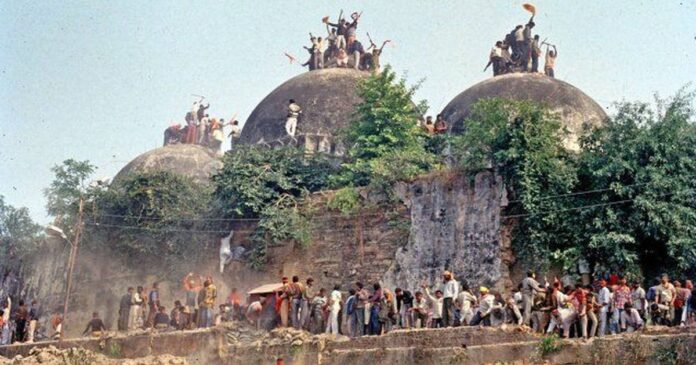The Supreme Court on Saturday gave its historic verdict in the Ayodhya dispute case. The constitutional bench of five judges gave the verdict after a 40-day hearing. The bench ruled in favor of Ramlala on the disputed land. Let’s know 10 big things about the Supreme Court’s decision.
01 Court said- Build trust for the temple: The apex court has directed the Center and the Uttar Pradesh government to form a trust in three months to build a Ram temple. The court said that 02.77 acres of land would remain under the central government until the trust is formed, once the trust is formed, the land will be transferred to the trust.
02 Appreciation of arbitrators: The Supreme Court praised Justices Kalifulla, Sriram Panchu and Sri Sri Ravi Shankar who played the role of arbitrator in the dispute. Also, the Nirmohi Akhara should be given a place in the trust to be built for the temple, though it will depend on the central government.

03 Mosque demolition is law violation: Supreme Court: On the demolition of Babri Masjid, the Supreme Court said that demolition of mosque is a violation of law. The court has directed the government to set up a trust to build the temple within three months and give separate five acres of land to the Muslim side. A new mosque will be built on this land.
04 Sunni Waqf Board Fails to Put Its Claim: Court: The court said that the Sunni Waqf Board has failed to lay its claim in the Ayodhya dispute. The Muslim side has failed to produce such evidence to prove that it has the right to disputed land. The court said in the judgment that separate land should be given to the Sunni Waqf Board. The Supreme Court has directed that Muslims be given alternative land to build a new mosque.
05 Muslims used to offer Namaz inside and Hindus worshiped in the outer compound: It is clear that Muslims used to offer Namaz inside and Hindus worshiped in the outer premises. However, the Hindus also claimed the sanctum sanctorum. While the Muslims did not leave the mosque.

06 Court said- Ram Janmabhoomi is not a person: The court also said that Ram Janmabhoomi is not a person who comes under the purview of law. The court said that decisions cannot be taken on the basis of faith. They can be references to resolve this dispute.
The Supreme Court said that during the British rule, hindu used to worship in Ram Chabutara and Sita Rasoi. There is evidence that the Hindus had possession of the exterior of the disputed land.
07 Nirmohi Akhara is neither Sevadar nor Devotee: Court: Supreme Court said that Nirmohi Akhara is neither Sevadar nor a devotee of Lord Ramlala. A bench headed by Chief Justice Ranjan Gogoi said that the claim of the land was rejected due to ‘limitation’.
08 Mosque was not on vacant land: Supreme Court: Supreme Court said that Babri Masjid was not built on vacant land. According to the ASI, the mosque was built on top of the temple structure. The court said that Hindus consider it to be the birthplace of Lord Rama. They have their own religious feelings. Muslims call it a mosque. Hindus believe that Lord Rama was born under the central dome. It is a matter of personal faith.
09 Chief Justice said: Balancing will have to be done: Chief Justice reading the judgment said that the court has to accept the faith of the people. The court must balance. While giving verdict on the claim of Nirmohi Akhara, the apex court relied on the report of the Department of Archeology. The court said that this cannot be doubted. Also, the discovery of the Department of Archeology is difficult to ignore.
10 Shia Waqf Board’s claim dismissed: Chief Justice Ranjan Gogoi, while passing judgment, said that we reject the special petition of Shia Waqf Board. The Shia Waqf Board challenged the Faizabad court’s decision in 1946. The court said that Babri Masjid was built by Mir Baki. It would not be right for the court to go into the field of theology. The Supreme Court has said that the disputed land in the revenue records is registered in the name of government land.

